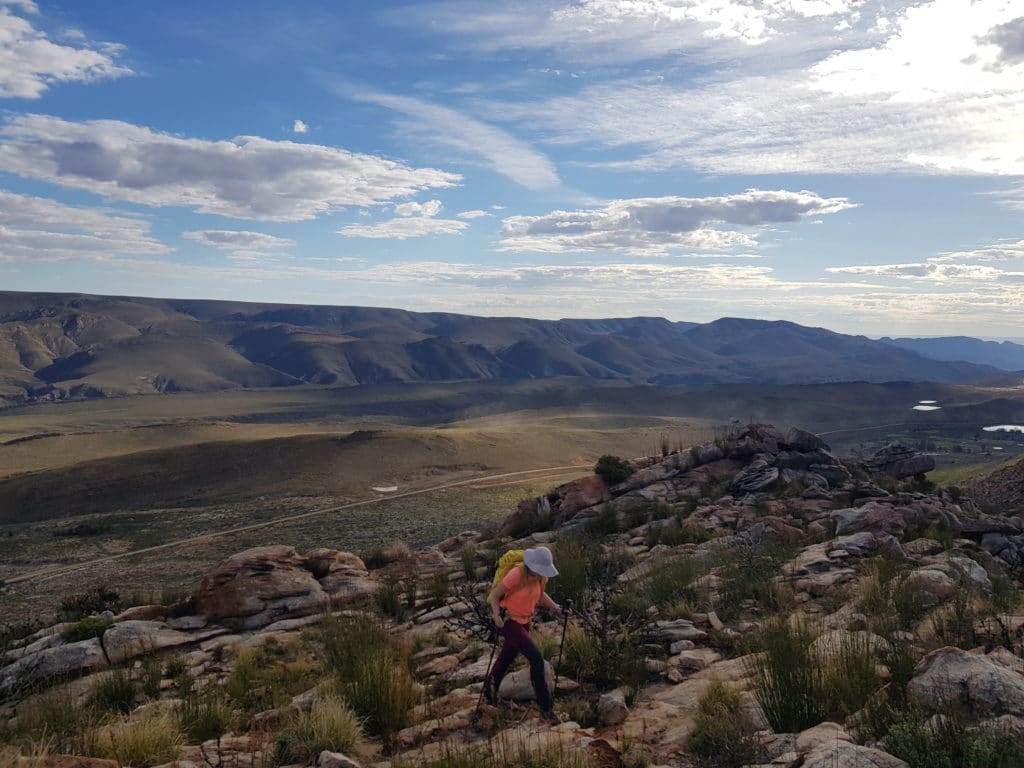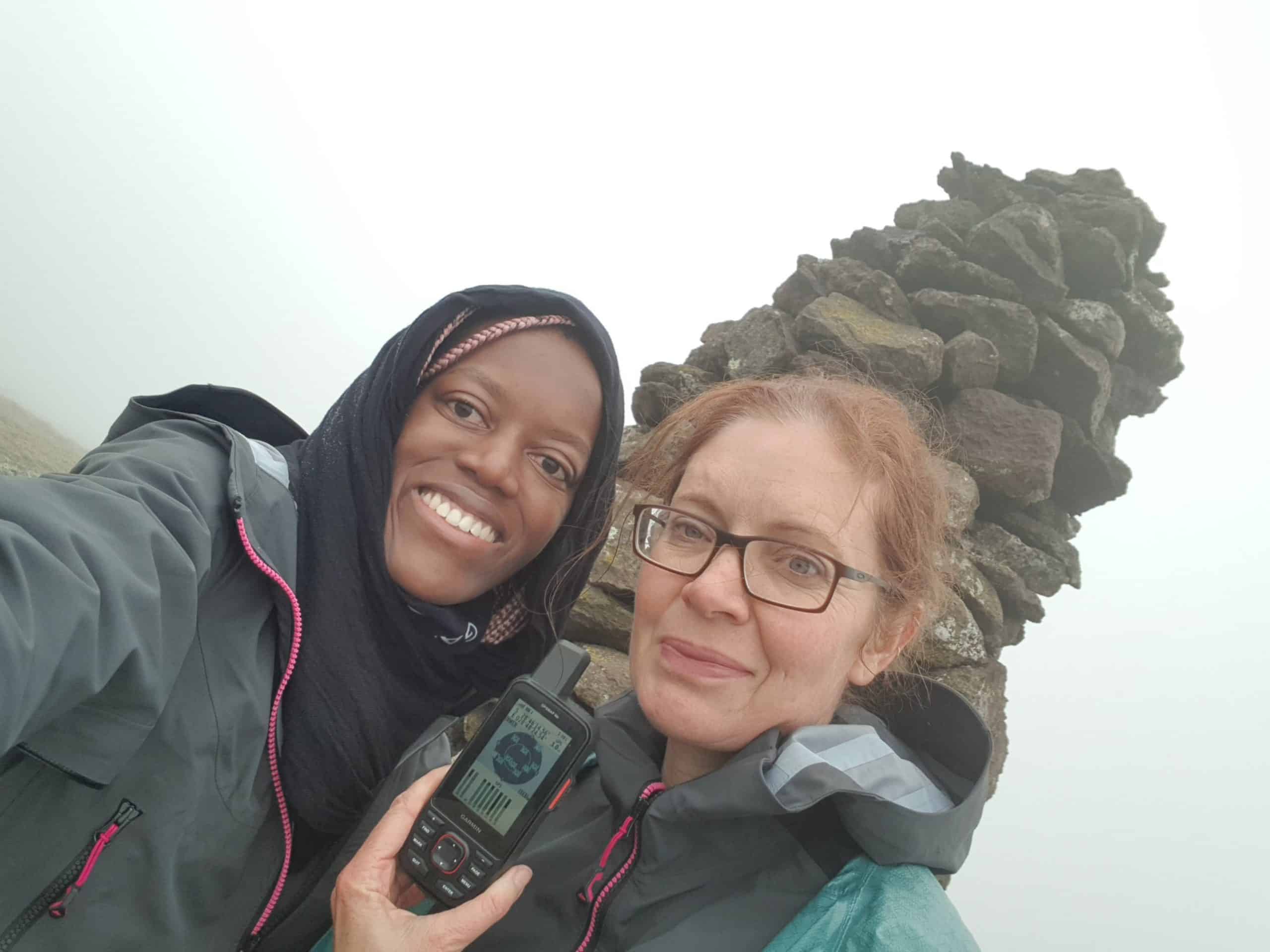In March, Evadnee Le Goff and Anita Musevenzo became the first all-women team to summit the highest mountains in South Africa’s nine provinces. In the rain, in the dark, in the freezing cold on those raw, rugged mountains, the two navigated treacherous terrain but stuck together.
ENDURANCE LESSONS ALWAYS go a long way in business – and in life.
And sometimes, you go beyond the boardrooms to find them.
South Africa’s Anita Musevenzo and Evadnee Le Goff found them on the peaks of the highest mountains in the country’s nine provinces, summitted all in one go.
And yet another high point of the 9 Peaks Challenge?

They are the first all-female team to do so.
The mountains they summited were: the Iron Crown in Limpopo, De Berg in Mpumalanga, Nooitgedacht in the North West, Toringkop in Gauteng, Mafadi in KwaZulu-Natal, Namahadi in the Free State, KwaDuma in the Eastern Cape, Murch Point in the Northern Cape, and Seweweekspoort in the Western Cape.
Le Goff, an accountant in Johannesburg, has always been a hiker, whereas Musevenzo, a skincare formulator, has been hiking for six years, with a YouTube channel called ‘African Hiker’.
But more challenging than the mountain adventure was the training ahead of it, which included hours in the gym, walks during the week and hikes on the weekends on South Africa’s blessed and most times, tough terrain.
The training was intense.
“Anita and I cut our teeth on wilderness hiking. So all our experience is in dealing with awkward terrain that’s rocky. And you know, every footstep, you’re not sure where you’re landing and it stood us in good stead,” says Le Goff. Musevenzo describes the drama at Mafadi, a
peak on the border of South Africa and Lesotho.
They slept on the escarpment because they didn’t get down before dark.
“So we get to the summit at about three o’clock in the afternoon. And now we’re hiking back. All is good. But the sun is setting and the sun sets fast on the mountain. It’s just dark suddenly.”
They came across a cliff they had not seen in the daylight, and the wind started picking up speed, eventually going up to 50 knots. They began hiking towards the pass.
“We arrive at the pass and we look down and it’s pitch black. And so I just thought to myself ‘nope, not happening, not going down there’,” she says.
At this point, Le Goff posits that either they get down the mountain or die of hypothermia. Musevenzo set off as cheerily as one could to find some reeds to settle in for the night and ward off the wind.
They used their backpacks to sleep on the damp grass, share a protein bar and settled down around 10PM. A survival blanket was the only thing they had to keep warm.
They waited for first light, periodically checking on each other, and set off in the morning again.
Together, they traversed the country and up its mountains as everyone else carried on with their daily lives. For them, each day was different as it unfolded new views and vistas about life.
“Some of it was also quite tragic, because there are sections in our country, especially the Eastern Cape, where I was really affected by the poverty and the social problems,” says Le Goff.
The duo also savored some beautiful moments; from taking in the variety of animal footprints on the river beds in the Northern Cape, to the locust swarms, the dusty back roads, as well as the two leopards they spotted.
At sunrise one morning, a kudu ran in front of their car.
Musevenzo says one of the best parts was the friendly community at the Drakensburg and the magical feeling of the whole area.
“We all know that the country is very diverse. But to see it all in one go and just see the change as you go from province to province, and also how the mountain changes even the Drakensberg; there are three provinces where the peak is on the Drakensburg, and all three of those are different,” she explains.
A particularly difficult moment for Le Goff was encountering the chain ladders at Tugela Falls.

“There weren’t any moments where I felt overwhelmed. There were one or two, I’d say, going down the chain ladders, in the dark, in the rain, I think it was challenging for Anita as well, because I was definitely very reluctant. I was trying to negotiate my way out of something which was unavoidable. “We had no other way to get off this mountain. And I’m not a huge fan of those chain ladders, because they are really treacherous,” Le Goff says.
Musenvenzo distracted her by telling her stories about her goldfish. She distracted her on the way up by telling her the story of how the tortoise got its shell.
They took turns looking after each other throughout the journey. One of the most challenging peaks was Seweweekspoort in the Western Cape. It was their last one. It was also one of Le Goff’s most memorable, for the raw ruggedness of the landscape.
“We were already so exhausted, and the terrain is very difficult. By then, we were physically and mentally so drained, it’s just a really rough climb to finish on,” says Le Goff.
“That would be the most challenging one for me too. I did not really enjoy Seweweekspoort. The mountain has teeth, and claws and nails,” adds Musevenzo.
The duo was supported by DecathlonSA, Garmin, Entsika Consulting, forever.fresh.foods and Racefood. After eight days, 22 hours and 42 minutes to complete the entire adventure, the women came home to Johannesburg with sore feet, but with full hearts and memories to last a lifetime – creating history along the way, one tough, treacherous peak at a time.
